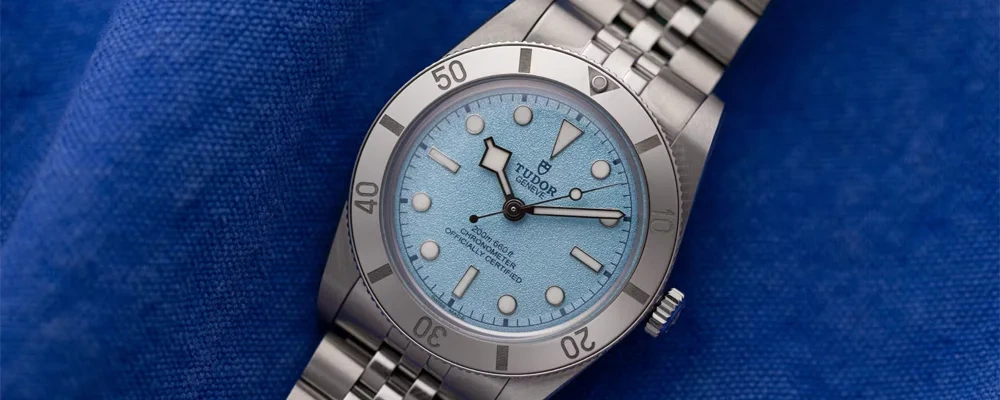Understanding Your Timepiece
Luxury timepieces transcend mere functional devices; they embody a fusion of artistry and precision engineering. Crafted from a diverse array of materials, each watch exhibits distinct characteristics. However, not all materials and mechanisms are equal in terms of durability, performance, aesthetics, and cost. In this blog post, we'll sum up the pros and cons associated with some of the most prevalent luxury watch materials and mechanisms. This analysis aims to guide you towards selecting the best luxury timepiece tailored to your preferences and requirements.
Materials
Luxury watch materials can be split into two main groups: metals and non-metals. Metals are the old choice for luxury watches, because they look nice and classy, and they are strong and don’t rust. Non-metals are the new choice for luxury watches, as they have different colors, shapes, and features that can make luxury watches more fun and useful.
Some of the most popular metal materials for luxury watches are:
Gold: Gold is the most fancy metal for luxury watches. It has different colors, like yellow, white, rose, and red, depending on what other metals are mixed with it. Gold doesn’t rust or get dirty, but it is also soft and easy to scratch or dent. Gold watches are also pricey and heavy, which might not be good for some people.
Photo source: Squarespace
Stainless steel: Stainless steel is the most common and easy metal for luxury watches. It is strong, cheap, easy to clean, and doesn’t cause allergies. Stainless steel can also be shiny or matte to create different looks or covered with other metals or materials to create different colors or effects. But, stainless steel is not very good at resisting scratches, and it can lose its shine over time.
Photo source: Watch Club
Titanium: Titanium is a light and strong metal that is often used for sporty or military watches. It is better at resisting scratches than stainless steel, and it has a cool gray color that some people like, and it doesn’t cause allergies or rust either. But, titanium is more expensive than stainless steel, and it can be hard to fix or change if it gets damaged.
Photo source: Hodinkee
Platinum: Platinum is the rarest and pricey metal for luxury watches. It has a white-silver color that looks like white gold, but it is heavier and denser. Platinum is also better at resisting scratches than gold or stainless steel, and it doesn’t rust or get dirty. But, platinum is very costly and hard to find, which makes it very special and fancy, but also very hard to get and use for many people.
Photo source: Hairspring
Some of the most popular non-metal materials for luxury watches are:
Ceramic: Ceramic is a hard and smooth material that is often used for the edges or cases of luxury watches. It has a shiny and smooth surface that can be colored or patterned in many ways. Ceramic is also good at resisting scratches, heat, fading, and allergies. The problem is that it is also weak and easy to break or crack if it falls or gets hit hard.
Photo source: A Blog To Watch
Carbon fiber: Carbon fiber is a light and strong material that is often used for sporty or racing watches. It has a woven texture that makes it look different. Carbon fiber is good at resisting scratches, shocks, heat, and rust, but it is also pricey and hard to make, which makes it rare and special.
Photo source: Hodinkee
Sapphire: Sapphire is a clear material that is often used for the glass or windows of luxury watches. It has a high shine that makes it sparkle. Sapphire is also the best material for resisting scratches for luxury watches, as only diamonds or other sapphires can scratch it. Sapphire watches tend to be extremely expensive, and mostly for a very particular taste.
Photo source: A Blog To Watch
Mechanisms
Luxury watch mechanisms can be split into two main groups: mechanical and quartz. Mechanical watches work by springs or gears that need to be wound by hand or by the movement of the wrist. Quartz watches work by batteries that send electric signals to a quartz crystal that moves the hands.
Some of the pros and cons of mechanical watches are:
Pros: Mechanical watches are more complicated and interesting than quartz watches, which makes them more fun for watch lovers and collectors. They also have a smoother move of the second hand, which makes them look nicer. These watches don’t need batteries or electricity to work, which makes them more green and trustworthy.
Cons: Mechanical watches are way less precise than quartz watches, as they can lose or gain time because of many things like temperature, humidity, magnets, or gravity. They also need regular care and service to keep them in good shape, which can be expensive and annoying. Mechanical watches are also more costly than quartz watches, as they need more skill and work to make.
Some of the pros and cons of quartz watches are:
Pros: Quartz watches are more precise than mechanical watches, as they can keep time to within a few seconds per month, need less care and service than mechanical watches, and only need to change their batteries every few years. Quartz watches are also more cheap than mechanical watches, as they need less stuff and things to make.
Cons: Quartz watches are less complicated and interesting than mechanical watches, which makes them less fun for watch lovers and collectors. The problem is they have a jerky tick of the seconds hand, which makes them look less nice. Quartz watches need batteries or electricity to work, which makes them less green and trustworthy.
Related Articles
Richard Mille re-releases their signature model in titanium - is it a good choice?

